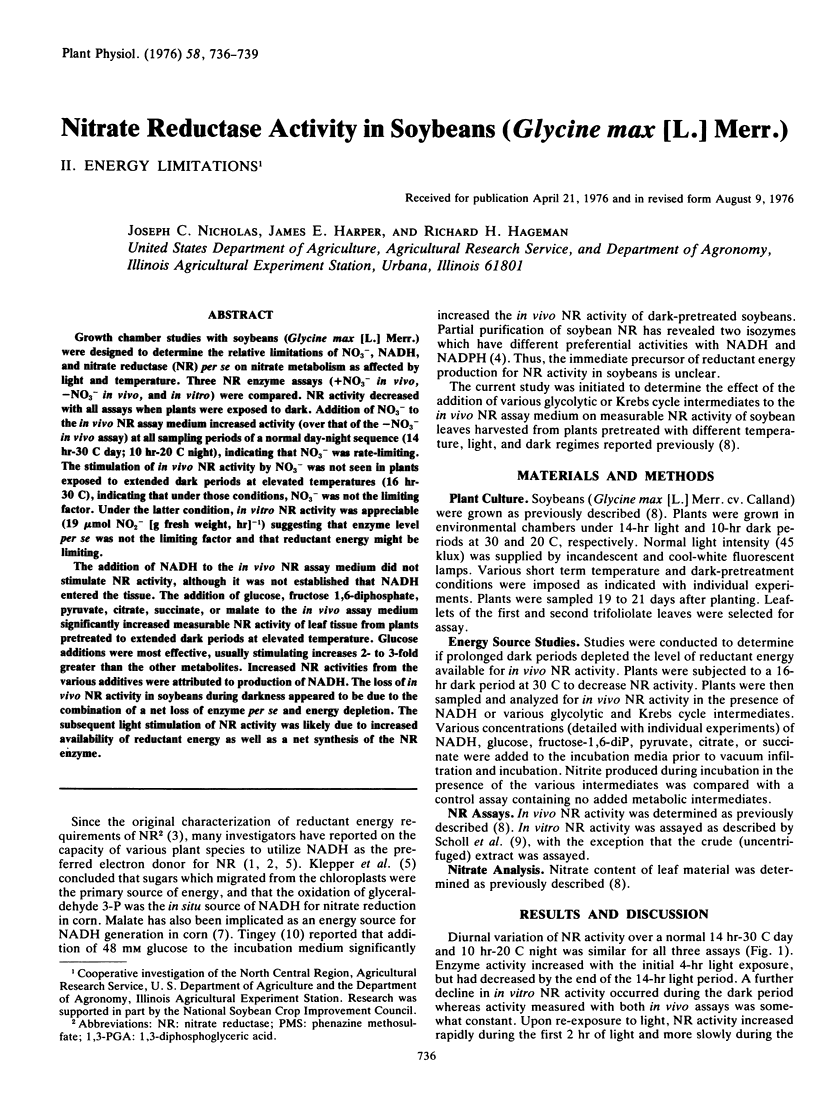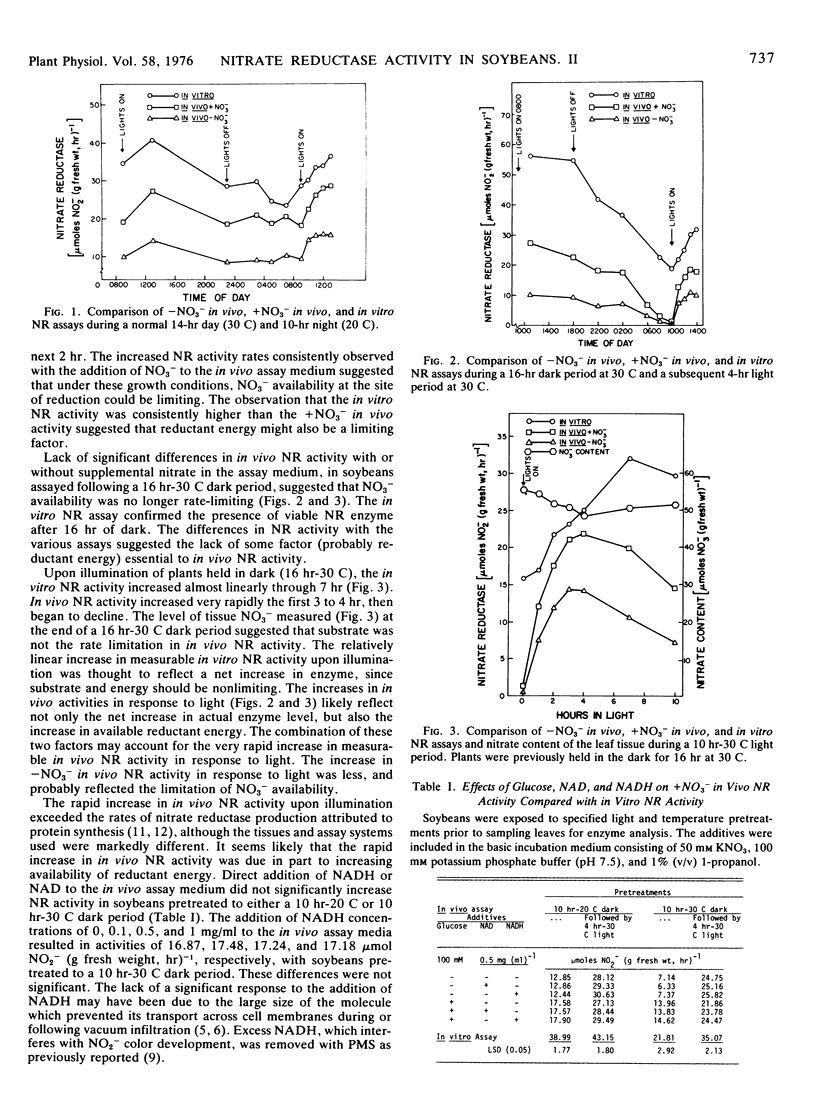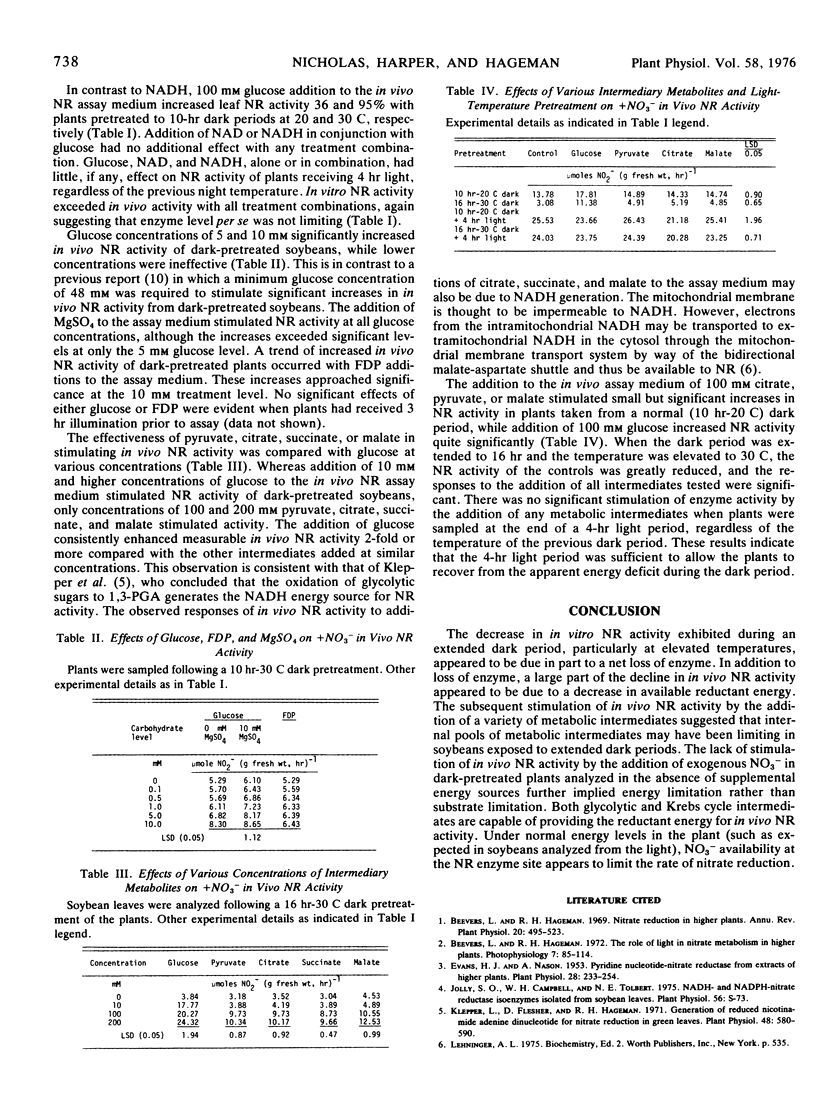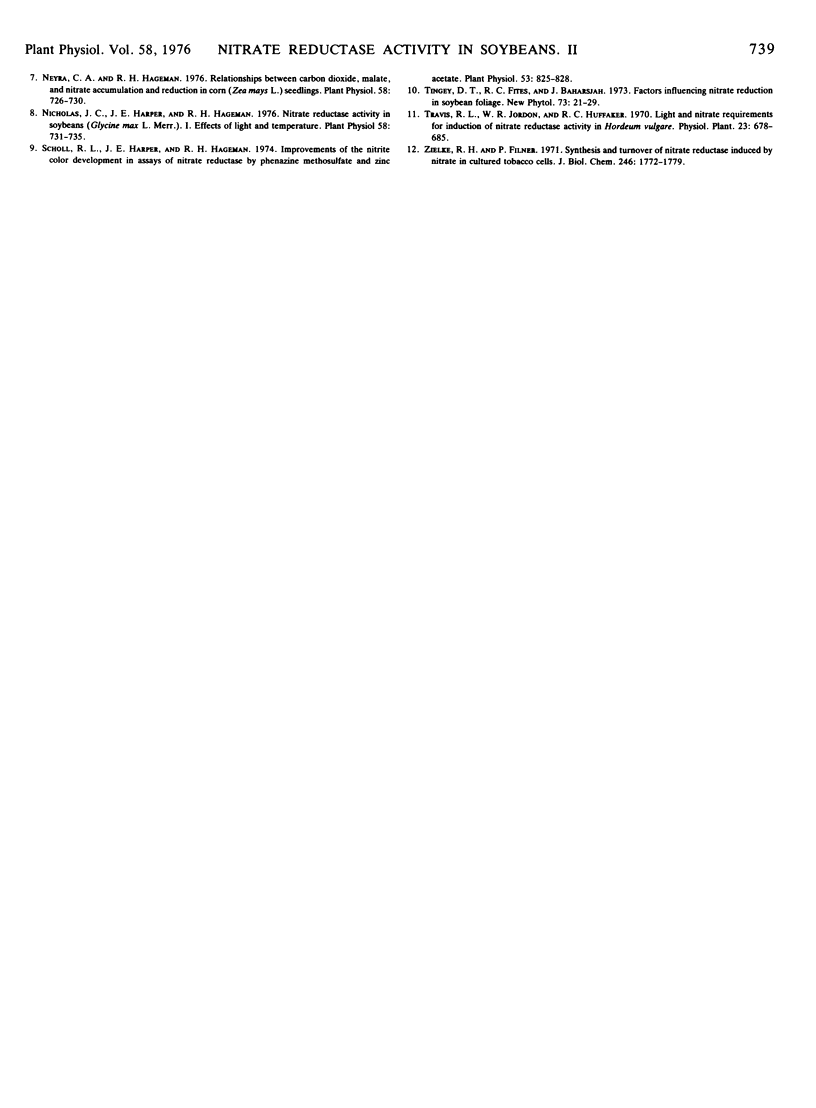Abstract
Growth chamber studies with soybeans (Glycine max [L.] Merr.) were designed to determine the relative limitations of NO3−, NADH, and nitrate reductase (NR) per se on nitrate metabolism as affected by light and temperature. Three NR enzyme assays (+NO3−in vivo, −NO3−in vivo, and in vitro) were compared. NR activity decreased with all assays when plants were exposed to dark. Addition of NO3− to the in vivo NR assay medium increased activity (over that of the −NO3−in vivo assay) at all sampling periods of a normal day-night sequence (14 hr-30 C day; 10 hr-20 C night), indicating that NO3− was rate-limiting. The stimulation of in vivo NR activity by NO3− was not seen in plants exposed to extended dark periods at elevated temperatures (16 hr-30 C), indicating that under those conditions, NO3− was not the limiting factor. Under the latter condition, in vitro NR activity was appreciable (19 μmol NO2− [g fresh weight, hr]−1) suggesting that enzyme level per se was not the limiting factor and that reductant energy might be limiting.
The addition of NADH to the in vivo NR assay medium did not stimulate NR activity, although it was not established that NADH entered the tissue. The addition of glucose, fructose 1,6-diphosphate, pyruvate, citrate, succinate, or malate to the in vivo assay medium significantly increased measurable NR activity of leaf tissue from plants pretreated to extended dark periods at elevated temperature. Glucose additions were most effective, usually stimulating increases 2- to 3-fold greater than the other metabolites. Increased NR activities from the various additives were attributed to production of NADH. The loss of in vivo NR activity in soybeans during darkness appeared to be due to the combination of a net loss of enzyme per se and energy depletion. The subsequent light stimulation of NR activity was likely due to increased availability of reductant energy as well as a net synthesis of the NR enzyme.
Full text
PDF



Selected References
These references are in PubMed. This may not be the complete list of references from this article.
- Beevers L., Hageman R. H. The role of light in nitrate metabolism in higher plants. Photophysiology. 1972;(7):85–113. [PubMed] [Google Scholar]
- Evans H. J., Nason A. Pyridine Nucleotide-Nitrate Reductase from Extracts of Higher Plants. Plant Physiol. 1953 Apr;28(2):233–254. doi: 10.1104/pp.28.2.233. [DOI] [PMC free article] [PubMed] [Google Scholar]
- Klepper L., Flesher D., Hageman R. H. Generation of reduced nicotinamide adenine dinucleotide for nitrate reduction in green leaves. Plant Physiol. 1971 Nov;48(5):580–590. doi: 10.1104/pp.48.5.580. [DOI] [PMC free article] [PubMed] [Google Scholar]
- Neyra C. A., Hageman R. H. Relationships between Carbon Dioxide, Malate, and Nitrate Accumulation and Reduction in Corn (Zea mays L.) Seedlings. Plant Physiol. 1976 Dec;58(6):726–730. doi: 10.1104/pp.58.6.726. [DOI] [PMC free article] [PubMed] [Google Scholar]
- Nicholas J. C., Harper J. E., Hageman R. H. Nitrate Reductase Activity in Soybeans (Glycine max [L.] Merr.): I. Effects of Light and Temperature. Plant Physiol. 1976 Dec;58(6):731–735. doi: 10.1104/pp.58.6.731. [DOI] [PMC free article] [PubMed] [Google Scholar]
- Scholl R. L., Harper J. E., Hageman R. H. Improvements of the nitrite color development in assays of nitrate reductase by phenazine methosulfate and zinc acetate. Plant Physiol. 1974 Jun;53(6):825–828. doi: 10.1104/pp.53.6.825. [DOI] [PMC free article] [PubMed] [Google Scholar]


